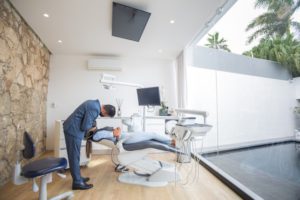Feeling a bit lost on what nuclear medicine even is? No worries, we’ll break it all down here. Knowing your nearby nuclear medicine clinics like PRP Imaging options can really come in handy.
Nuclear Medicine 101
So what exactly is nuclear medicine? Basically, it uses very tiny amounts of radioactive material, called radiotracers or radiopharmaceuticals, to diagnose and treat certain illnesses.
Here’s how it works – the radiotracer gets put into your body, usually by injection or swallowing a pill. Then a special camera tracks it to see how your organs and tissues are functioning.
The amounts of radioactive stuff are super controlled and safe. But it allows doctors to get crucial imaging tests done to pinpoint issues. Kinda neat.
When Nuclear Medicine Comes in Handy
There are some pretty common situations when your doc may want nuclear imaging tests done:
- Looking for heart disease
- Checking how well thyroid or kidneys are working
- Finding cancer or seeing if it has spread
- Identifying infection or inflammation
- Evaluating bones for damage or arthritis
Getting scans done at a nuclear medicine clinic provides very useful info to customize your treatment.
Benefits of Nuclear Medicine
Some key perks that nuclear scanning offers patients:
- Very detailed images that highlight specific organs or tissues
- Ability to see function and blood flow, not just structure
- Earlier detection of some conditions compared to other tests
- Often no pain or anesthesia needed
- Low radiation exposure in most cases
For many conditions, nuclear medicine is kinda like an early warning system that spots issues so they can be treated promptly.
What Happens at the Clinic
If your doctor orders nuclear scans, here’s the basics of what to expect:
- They’ll inject you with a very small amount of radioactive tracer.
- You’ll wait nearby for it to circulate and absorb. This takes anywhere from 20 minutes up to a few hours depending on the test.
- When it’s time, you’ll lie down on an exam table and a special camera will scan over the area being examined. You just have to hold still.
- The camera doesn’t touch you at all. It detects and makes an image of the tracer in your body.
- After the scan you can head home. The radioactive material disappears from your body quickly.
See – nothing to get anxious about. The staff will explain everything clearly along the way.
Getting Your Clinic List Ready
Hopefully this gives you a good overview of nuclear medicine and why you may need it. Here are some tips on putting together your go-to clinic list:
- Ask your doctor for a recommendation of a reputable clinic they are familiar with.
- Search online for highly reviewed nuclear medicine centers near your home and job.
- Look for clinics associated with major hospitals and health networks. These often have the latest tech and specialists.
- Jot down a list of 3-5 options so you’re prepared. Include their contact info and location.
Having your nuclear medicine clinic list ready means you can quickly book scans and get the answers you need about your health.




Be First to Comment